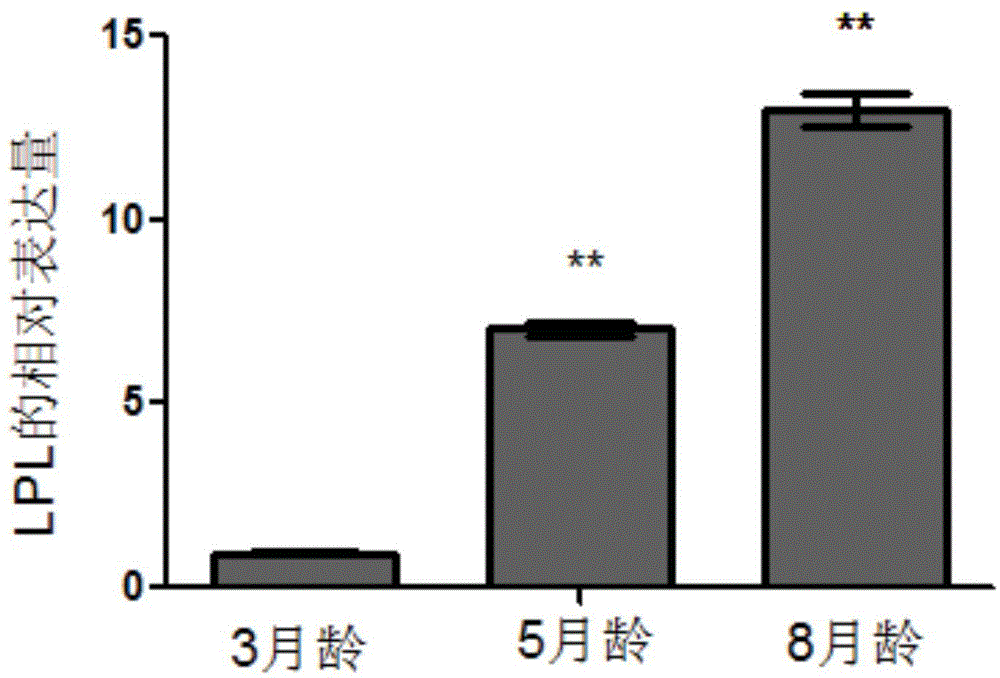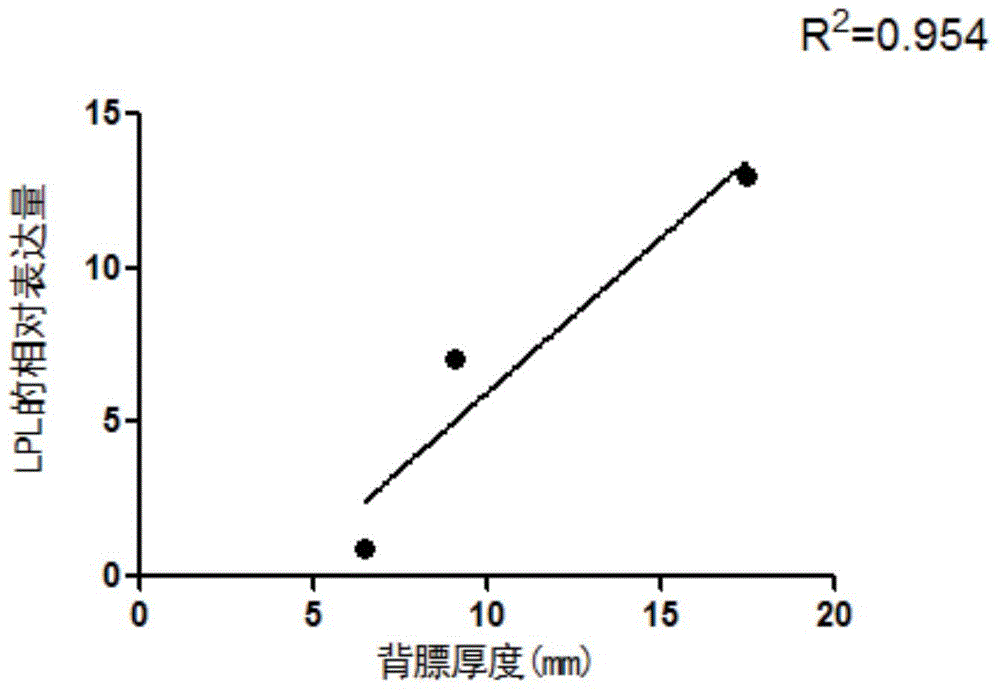Method for detecting fat deposition of Bama miniature pig by virtue of LPL (Lipoprotein Lipase) gene
A Bama-flavored pig, fat deposition technology, applied in biochemical equipment and methods, microbial determination/inspection, etc., can solve problems such as reducing the value of livestock products and inducing diseases of livestock and poultry
- Summary
- Abstract
- Description
- Claims
- Application Information
AI Technical Summary
Problems solved by technology
Method used
Image
Examples
Embodiment Construction
[0020] 1. Research Design
[0021] Bamaxiang pigs were fed normally, collected at 3 months, 5 months, and 8 months to detect the expression level of lipoprotein lipase LPL, and the relationship between the expression level of gene LPL and the fat deposition rate was investigated.
[0022] Using the LPL sequence of pig (sus scrofa) published in the NCBI database (sequence accession number: Gene ID: 397537; see the website: NCBI data http: / / www.ncbi.nlm.nih.gov / ), successfully designed a pair of The specific quantitative primers can detect the relative expression level in the pig genome. The LPL-specific fragment of pig (sus scrofa) has a full-length sequence of 2946bp. The pig's housekeeping gene glyceraldehyde-3-dehydrogenase gene GAPDH-specific fragment has a full-length sequence of 1341bp.
[0023] The primer pair for quantitative PCR above-mentioned LPL specific fragment, its base sequence is:
[0024] Forward primer (P1): TGCTGGGAATCCAAACTGAA;
[0025] Reverse primer (...
PUM
 Login to View More
Login to View More Abstract
Description
Claims
Application Information
 Login to View More
Login to View More - R&D
- Intellectual Property
- Life Sciences
- Materials
- Tech Scout
- Unparalleled Data Quality
- Higher Quality Content
- 60% Fewer Hallucinations
Browse by: Latest US Patents, China's latest patents, Technical Efficacy Thesaurus, Application Domain, Technology Topic, Popular Technical Reports.
© 2025 PatSnap. All rights reserved.Legal|Privacy policy|Modern Slavery Act Transparency Statement|Sitemap|About US| Contact US: help@patsnap.com



